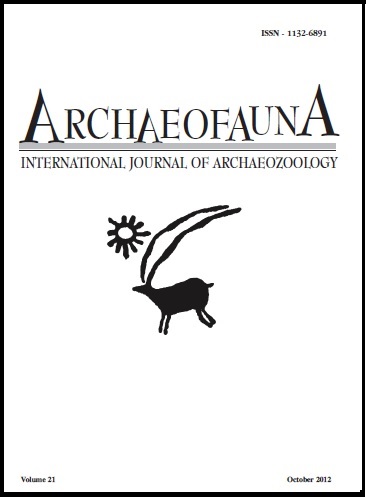Life history information from tracks of domestic dogs (Canis familiaris) in ceramic building materials from a Roman bath-house at Vindolanda, Northumberland, England
Palavras-chave:
Pisadas, rastros, Canis familiaris, Perro doméstico, Vindolanda, Constitución, Análisis de paso, Perro Braquimélico, Icnología, IcnoarqueologíaResumo
Este estudio analiza las pisadas de perros (Canis familiaris) conservadas en ladrillos y tejas usadas en la construcción de una terma romana de Vindolanda (Northumberland, Inglaterra) durante el primer siglo de nuestra era. Se describen los tamaños y características de las huellas caninas, así como los senderos que éstas definieron y los tipos de marcha a los que remiten. Las medidas indican la presencia de entre tres y cinco tipos diferentes de perros. No resulta posible predecir el tamaño del perro a partir del tamaño de una huella. Las improntas del pelaje detectadas en determinadas huellas se han comparado con otras registradas en perros y gatos actuales. La colección de huellas de animales domésticos de Vindolanda es la mayor jamás documentada en yacimientos británicos de época Romana y una de las mayores conocidas en el mundo hasta la fecha. A la vista de la valiosa información que aportan las huellas animales sobre la biología de las especies, el trabajo concluye animando al abordaje de nuevos trabajos en el área de la icnoarqueología.

